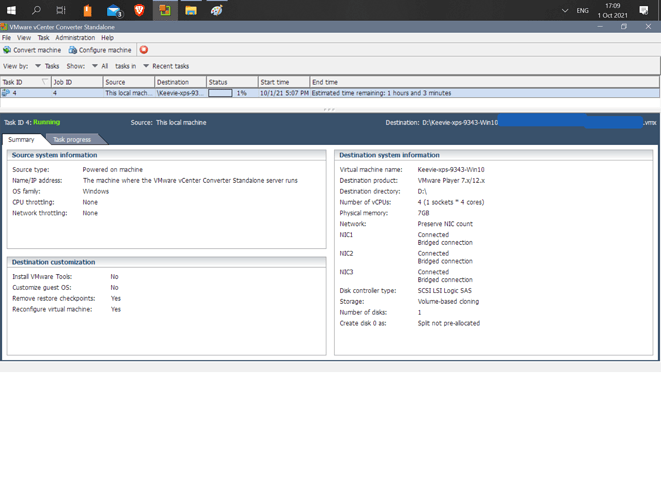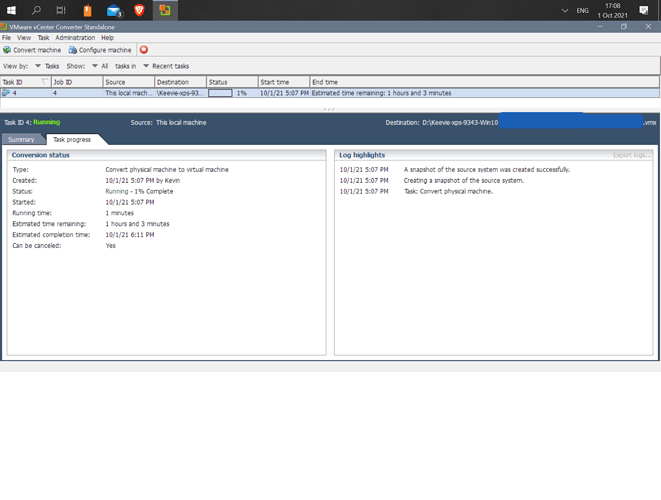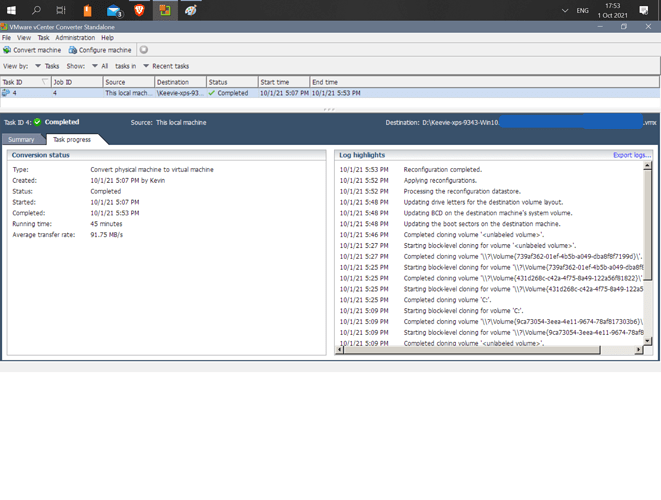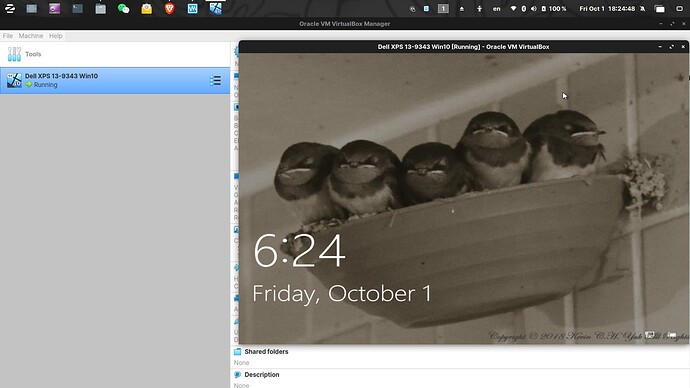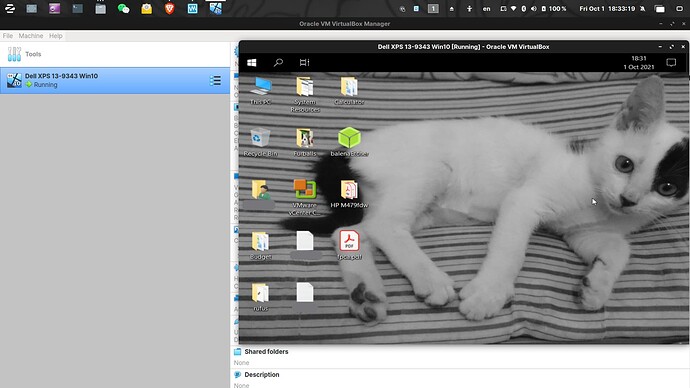Found a relatively underutilized USB 3.0 SATA 2.5" External HDD to test. On physical Win10 for conversion I used vCenter Converter to convert my entire internal m.2 SATA SSD to the external drive. Then just added the *.vmx file from the external HDD to Oracle Virtual Box on Zorin and clicked the proper settings for my host system in the GUI.
I got Win10 OEM of my Dell Laptop to load as a VM within Zorin OS 16. Since, the external drive is slow, the response is slow. I then deleted the dual boot Zorin Partition in the VM, and then shrunk the entire virtual SSD.
But, it shows, it's possible. Very easy to do. Once I get a bigger m.2 SATA SSD, I could move the *.vmx and *.vmdk files on the the new internal drive for better responsiveness.
Entire process took less than 1.5 hours.
Conversion Summary:
Converstion Start:
Conversion Finished:
VM Win10 Loaded:
VM Win10 Logged In:
On a continued try to test, I converted my Win10 P2V using disk2vhd. Then converted the *.vhd file to *.vdi using Windows version of VBoxManage. *.vhdx files will not convert.
On Windows, but, GNU/Linux is the same:
c:> cd "C:\Program Files\Oracle\VirtualBox"
c:> VBoxManage clonehd --format VDI mydisk.vhd mydisk.vdi
I then booted the VM Guest into a Win10 ISO and used diskpart in command prompt to quick format the EFI partition to fat32.
D:/diskpart
sel vol # "# is volume of EFI"
format quick fs=fat32 label=EFIImmediately:
bcdboot Drive:/Windows
"Drive is volume of Windows"
This fixes and eliminate dual boot, since the 2nd OS would be missing or deleted. VM Guest will boot directly into Windows.
I like *.vdi files form since it's a single file, and compactable or resizable VHDD as needed. VCenter Converter made a few dozen *.vmdk files for the single new virtual drive instead.
This time, it took less than 45 minutes.
I also setup to boot the other OS partition as a VM Guest.
